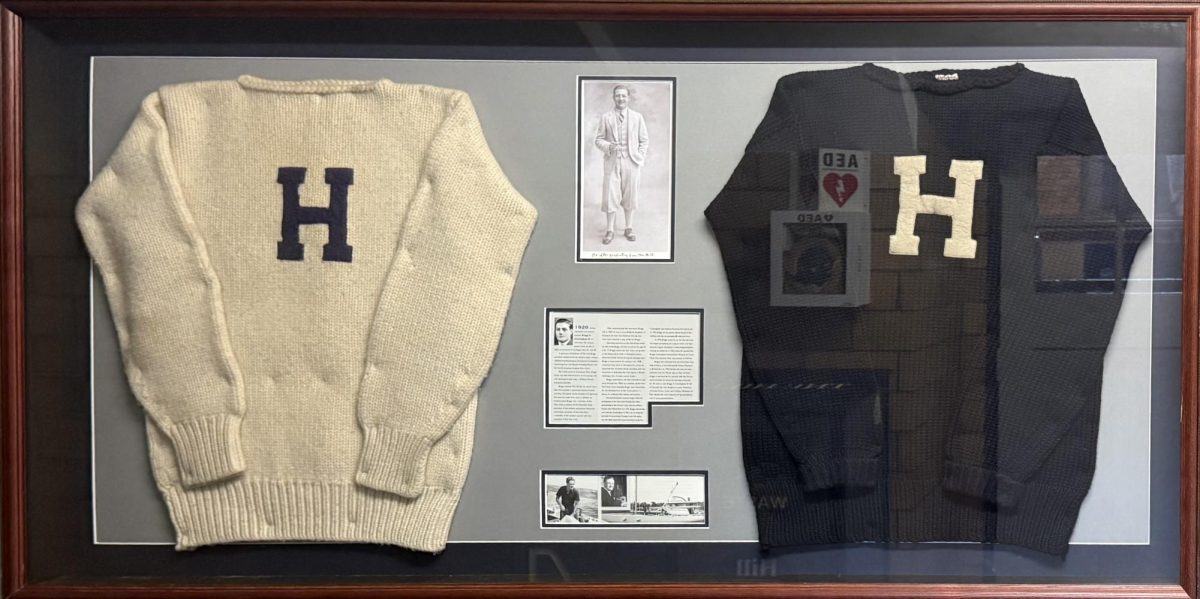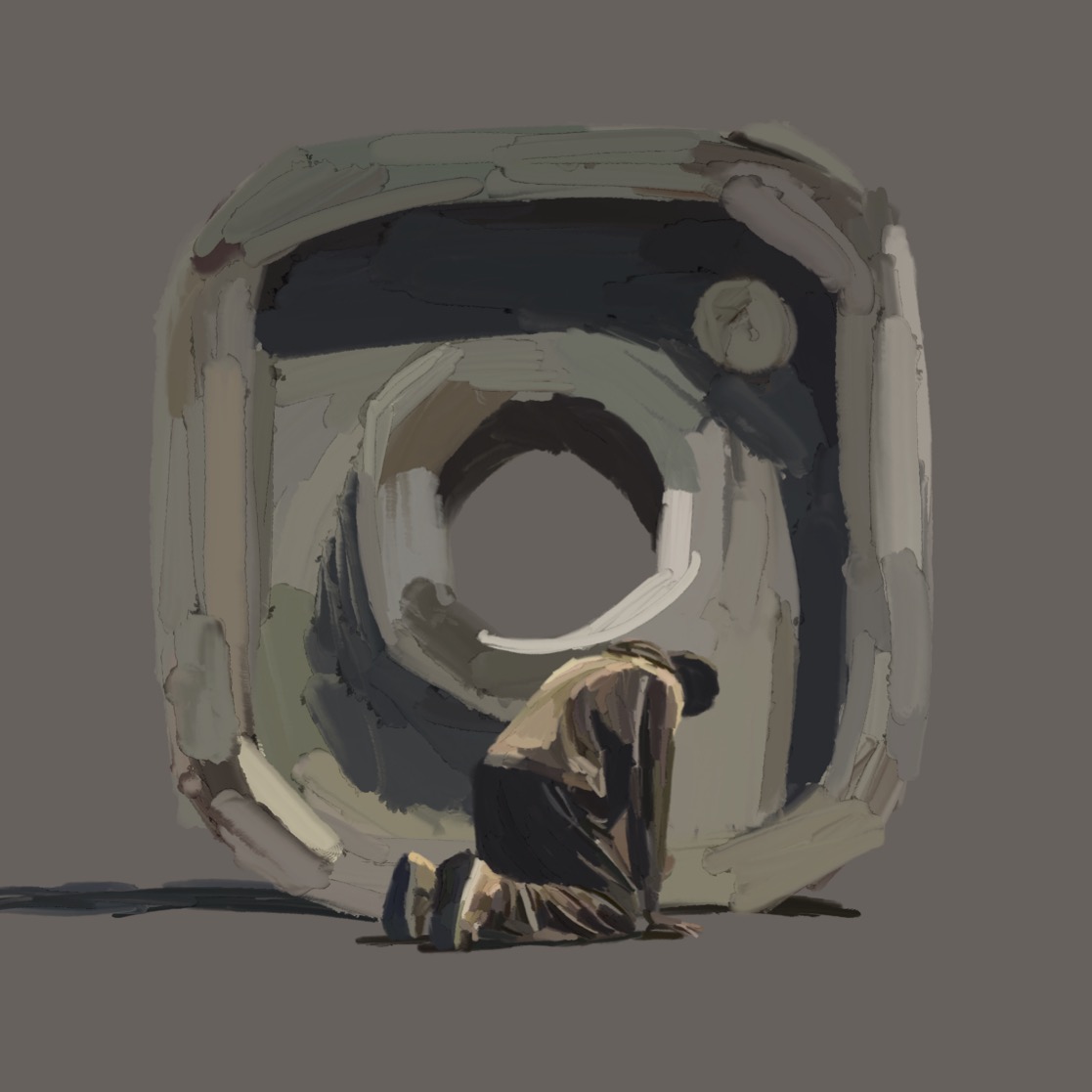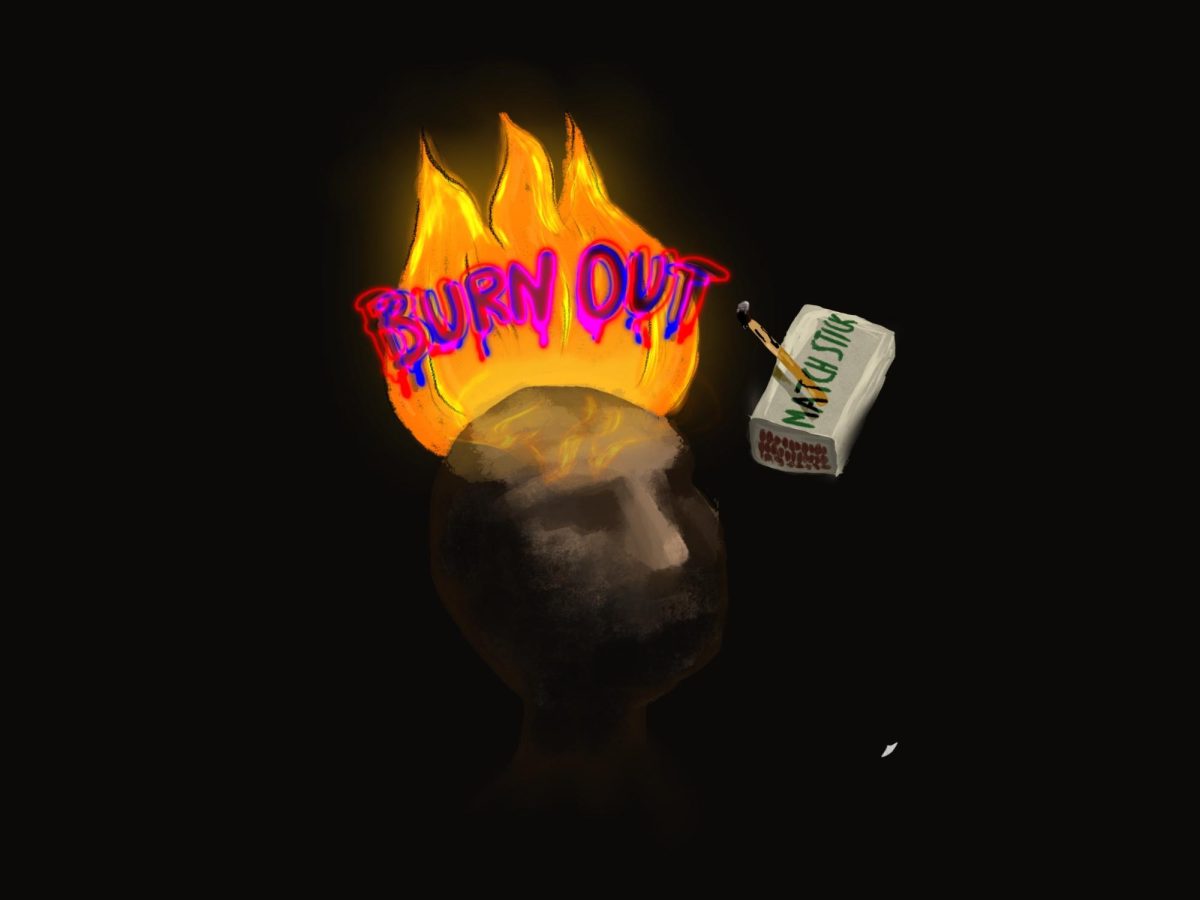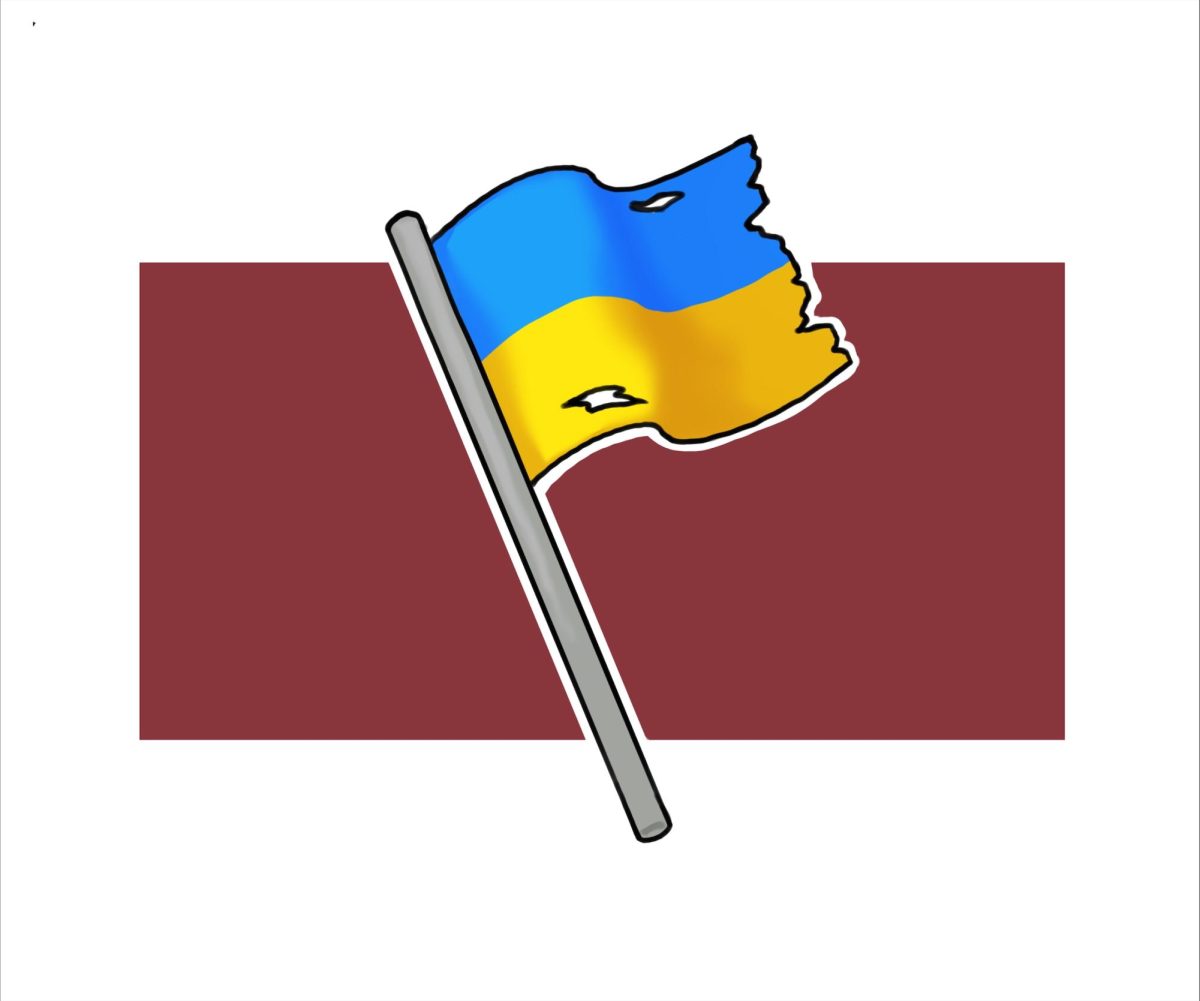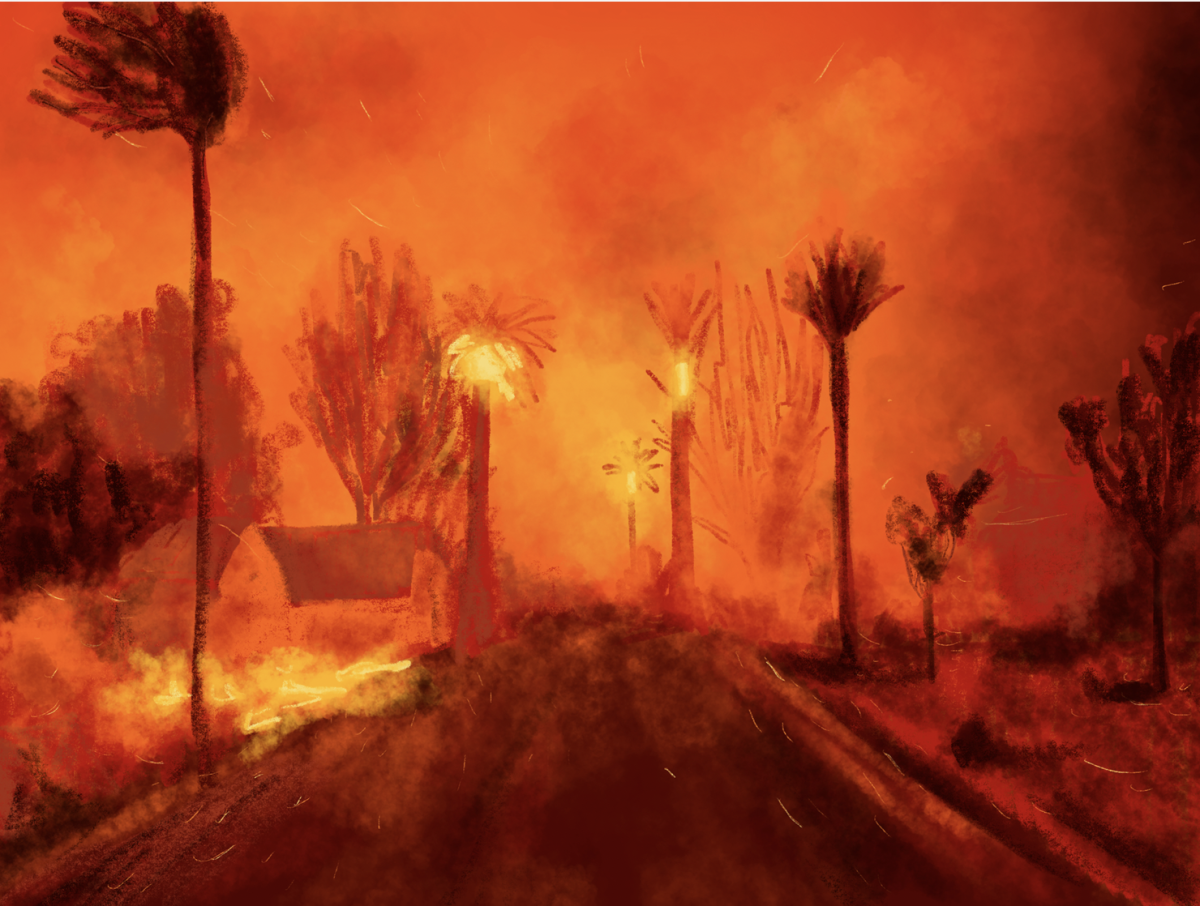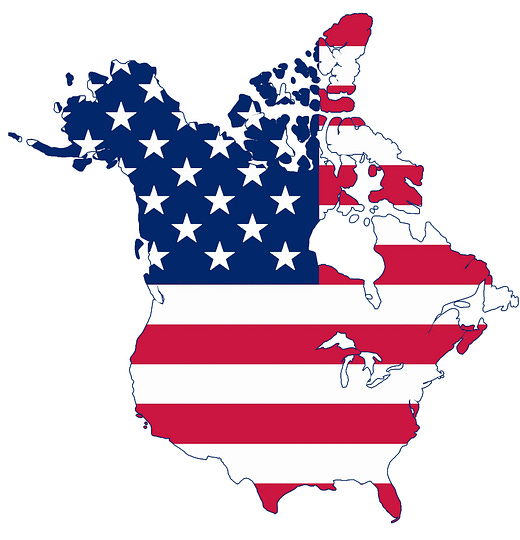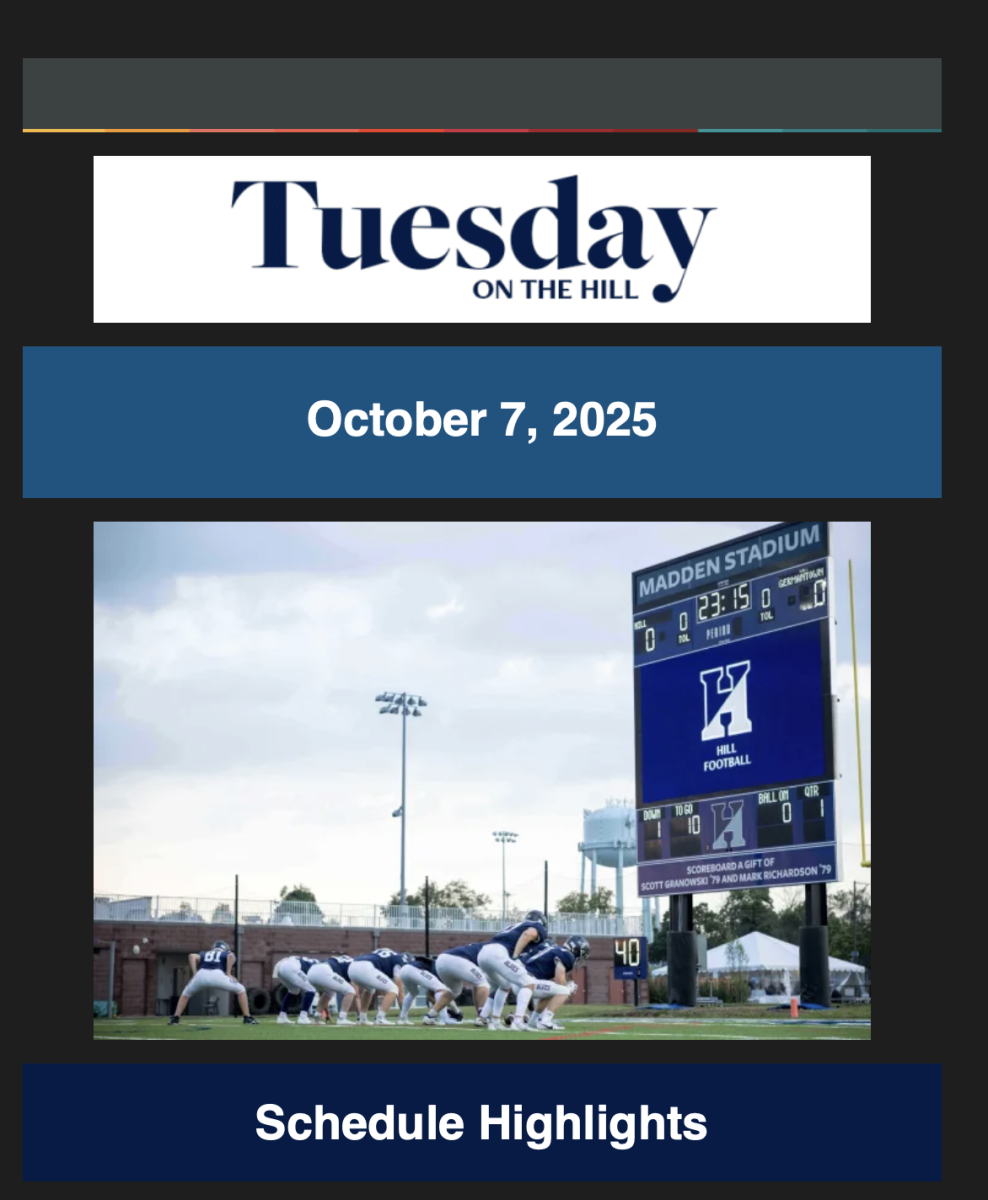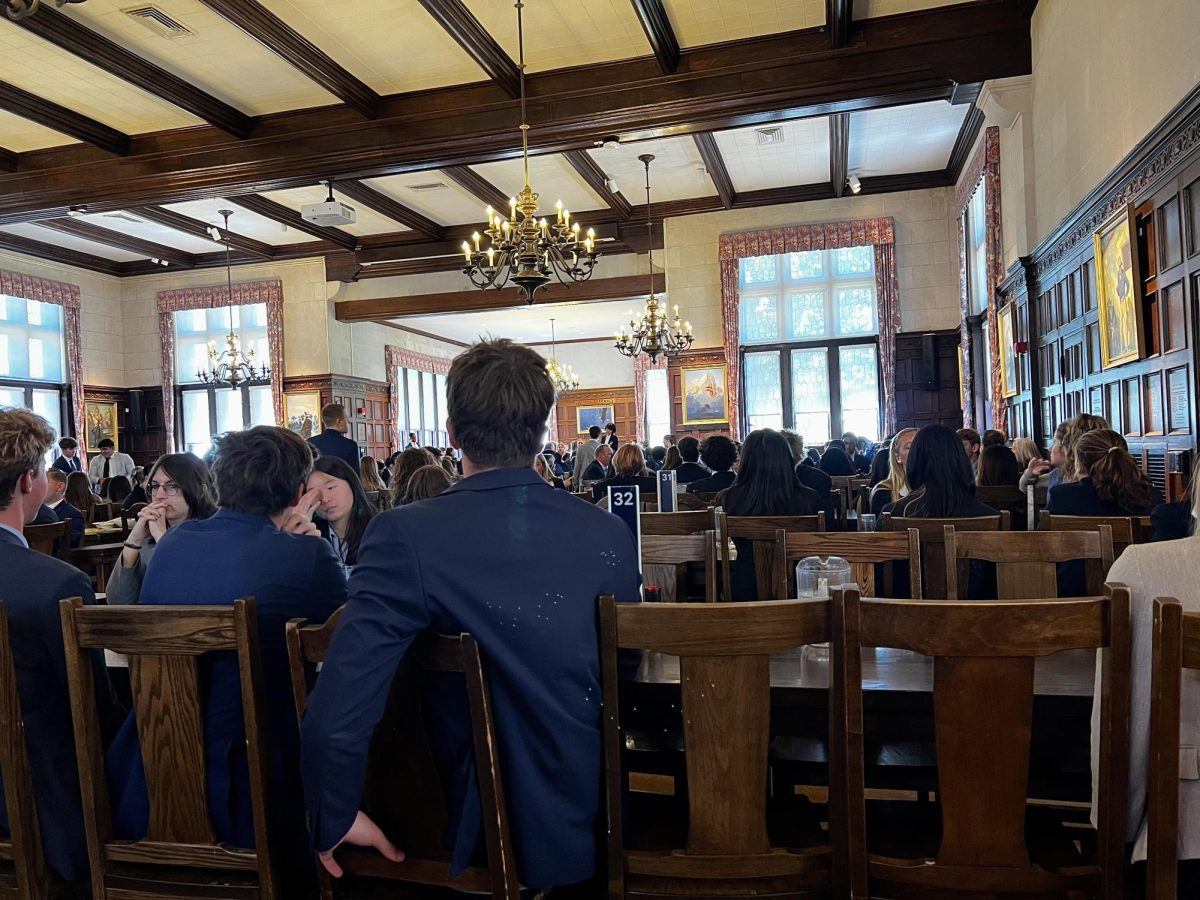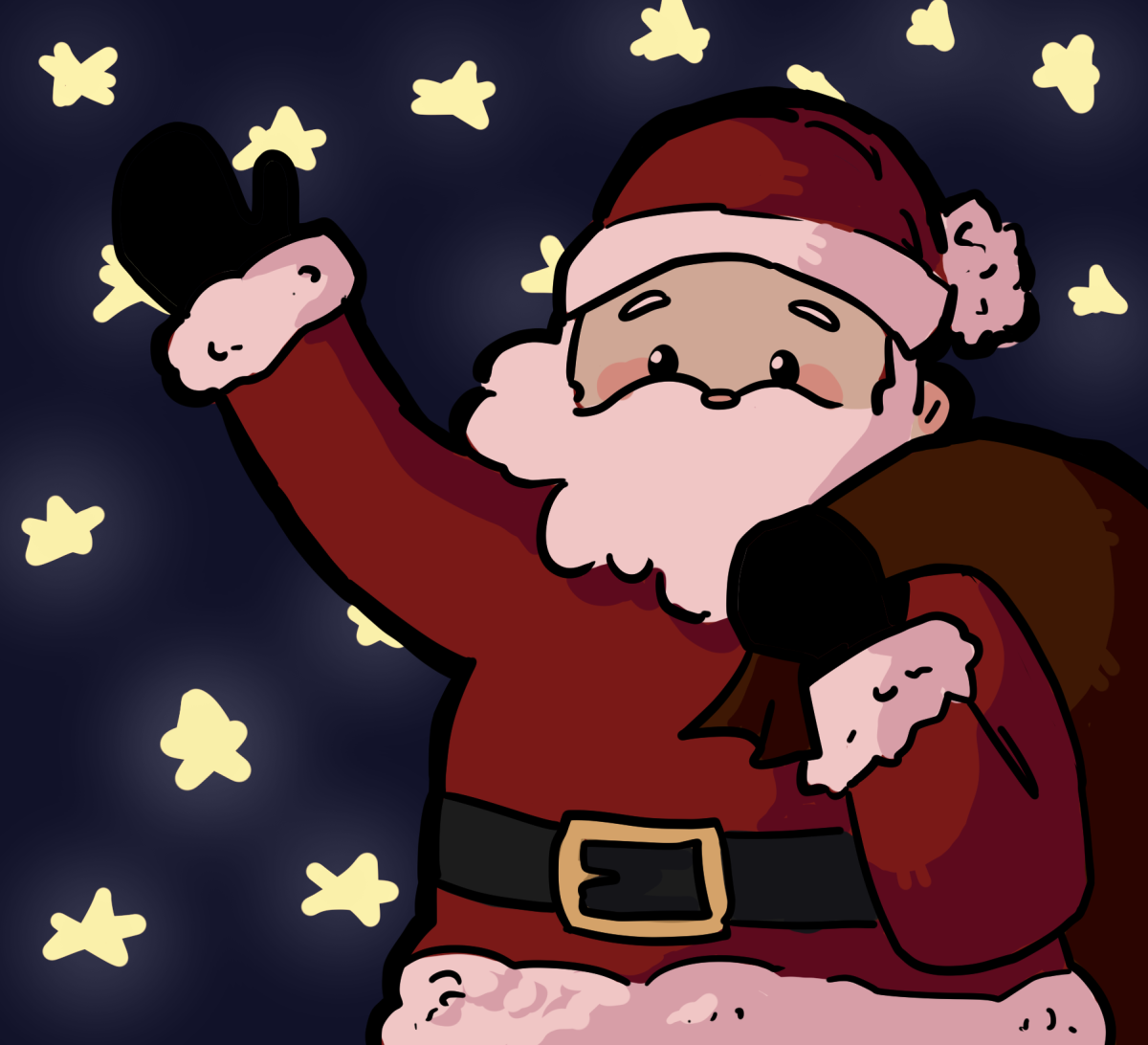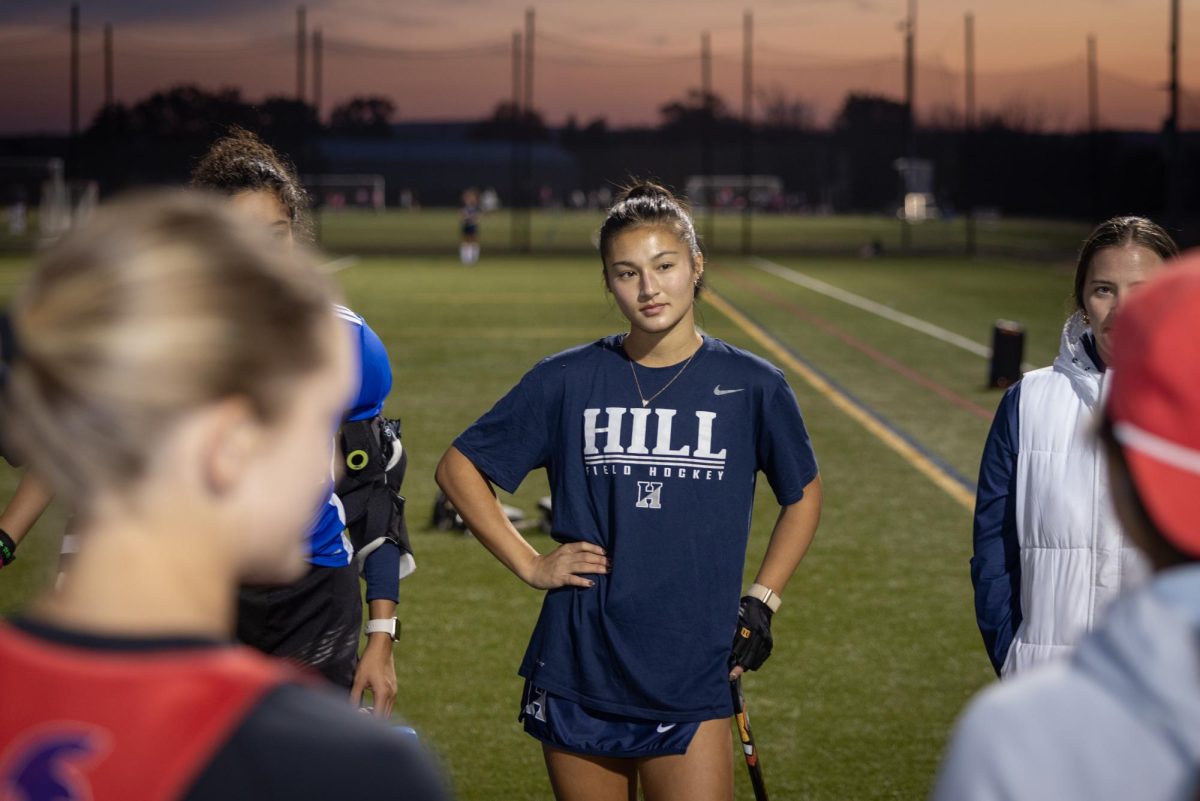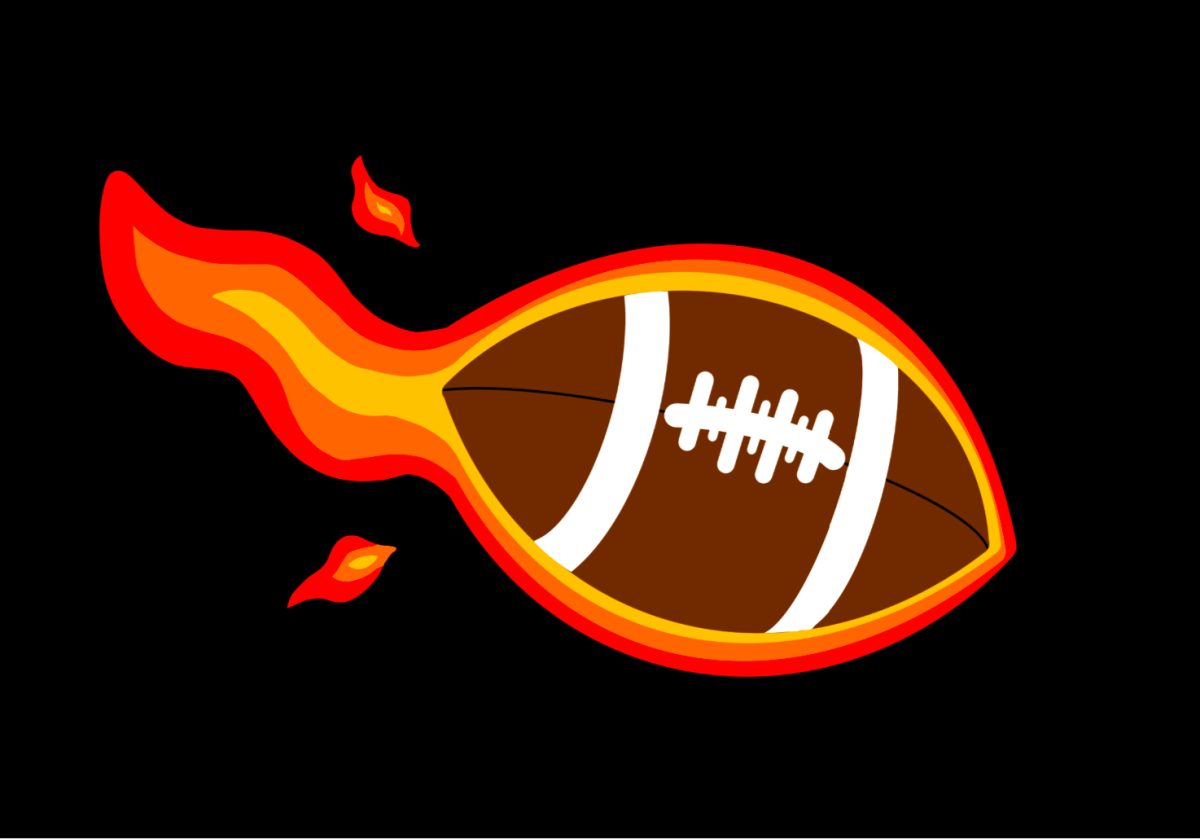Along the dimly lit corridor outside the Briggs S. Cunningham ’26 Pool lines photographs of over a century of varsity sports teams. In each one, Hill athletes wear the same familiar sweater emblazoned with the letter “H.”
The Major-H sweater represents one of the many historic traditions at Hill. Students receive the sweater when they earn their varsity letter, as a recognition of their excellence and commitment to their sports. While the Major-H sweater can often be seen across campus, especially on chilly class days, the history of the sweater is less widely known.
“While the specific requirements of earning the Major-H sweater might have changed somewhat slightly over the years, it’s still an iconic representation of excellence and serving the school through the highest level of interscholastic athletics,” said Seth Eilberg, director of athletic giving and former director of athletics.
Eilberg said, “Now that I’m talking more to alumni, I know it means a lot to them that they still have their sweater and sometimes we’ll get calls saying, ‘I outgrew my sweater.’ ‘I lost my sweater.’ ‘Can I get another one?’ And if they can buy it if they did in fact earn a sweater.”
Jay Spencer ’84, head coach of swimming and diving, underscored what it takes for athletes to earn their sweater and what it still symbolizes for the Hill community.
“What it really comes down to is that people are contributing to the team and earning points in meets,” Spencer said. “Commitment and contribution to the team are the two elements that go into it.”
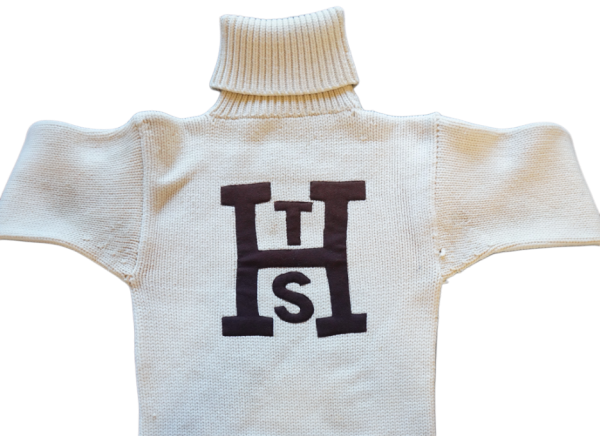
The Major-H sweater can be traced back to the first letter sweaters worn by the 1865 Harvard baseball team, a similar white wool pullover that honored their top players. The exact date marking the origins of Hill’s Major-H sweater, however, is still unknown, though the sweater was mentioned in early editions of The Hill News. The earliest known reference of the Major-H sweater in The Hill News comes from an article first published in late 1906. The article reads: “The second meeting, on Thursday evening, November 8, was called to give out the ‘H.’ sweaters, jerseys and stockings to the fellows who were to play in the Hotchkiss game.”
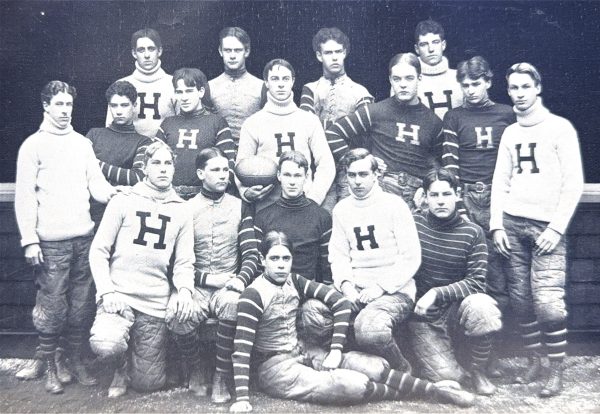
Documentation of the Major-H sweater that is earlier yet can be found in The Record which, before its separation from The Hill News in 1902 to become an independent literary magazine, was responsible for covering school news. The Record in 1897 featured a photograph of the varsity football team in Major-H sweaters.
Many believe that the design of the Major-H sweater has remained virtually unchanged over the years. However, in an old cardboard box amidst many others in the archive room on the top floor of the Ryan Library, Lou Jeffries, head of archives, found an early iteration of the sweater very much different from the one today.
Unlike the modern Major-H sweater, with its large navy blue “H” and crewneck design, the older version features a turtleneck, as well as a dark brown “H” flanked by a smaller “T” above and “S” below. Together, the “THS” acronym likely stands for The Hill School. The aforementioned 1897 Major-H sweater, otherwise identical to its modern counterpart, was distinguished by a very similar high-rolled turtleneck. That specific design found in the school archives, however, never appeared in photographs published in The Dial, The Hill News, or The Record, leaving its period of use and original purpose unknown.
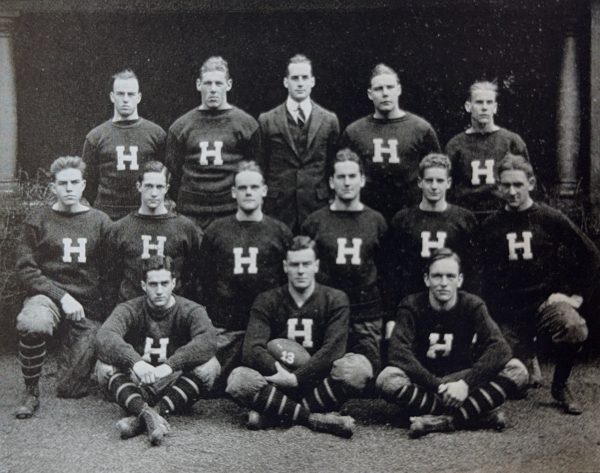
Regardless, the relic provided the first clue that the design of the Major-H sweater underwent substantial alterations over the decades.
Beginning in the 20th century, photographs of sports teams in the Major-H sweater became a prominent feature in The Dial. The Major-H sweater saw the most variety in its design in the 1910s and 1920s. Notably, 1913 marked the first appearance of a novel design originally for the football team, which features a dark blue sweater with a white “H,” a style later adopted for theater students in 2019. This design continued to appear frequently until the 1940s, at which point it was gradually phased out in favor of the white version in use today.
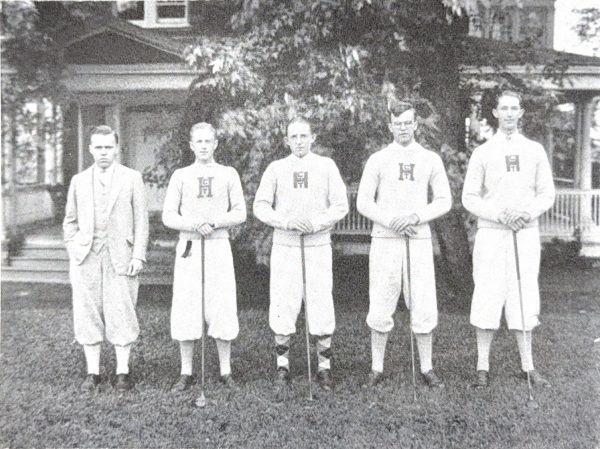
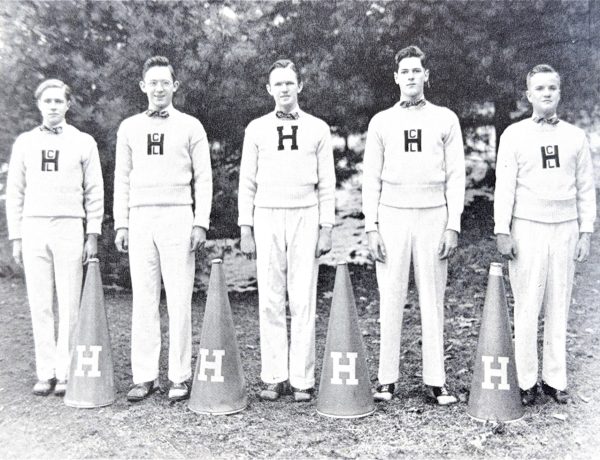
Major-H sweater designs with customizations for each sport were first introduced in 1922. The 1922 basketball team wore sweaters with two smaller “Bs” on either side of the “H” letter to signify their sport.
Use of this design became far more prevalent in 1926. Marginally from the 1922 design, smaller letters are generally placed above and below the “H” to specify the sport. For example, the golf team sweater has “G” and “T” for “golf team.”
Interestingly, the Dial, in 1941, included a photograph of cheerleaders wearing the sweater, suggesting that they, too, were eligible for the Major-H sweater. Much like the 1926 designs, “C” and “L” were situated above and below the “H” to stand for “cheerleaders.”
From the 1950s onward, other variations of the Major-H sweater gradually disappeared, and the iconic white sweater with a navy blue “H” emerged as the standard look. The school chose to keep the sweater despite the widespread adoption of the varsity letterman jacket across the country during this time.
Today, the Major-H sweater remains largely unchanged and an essential facet of Hill culture.
“As a senior, the sweater serves as a reminder of all the work that’s gone into four years of competing and improving,” said Liam Mpofu ’26, varsity athlete in cross country, swimming, and track. “But I think the real meaning is in the journey and the community rather than the clothing itself.”
Jackson Bala ’27 has played varsity soccer since his 3rd form year. He said, “From my time growing up on Hill’s campus, I found that the traditions that we carry are what means the most to me. I feel that these traditions are what make Hill unique.”
“When it comes to the Major-H sweater, I feel it represents not only the long-standing athletic success Hill has had through the many years, but also the student’s effort and time set aside dedicated to their sport or extracurricular,” Bala said.
The Major-H sweater was first introduced to the theater program in the 2018-2019 school year, said Kat Ross Kline, instructor of the performing arts and head of the Ellis Theatre Guild. The design is differentiated from the sports sweater in that it is navy blue with “H” in white, a style first used by the football team a century ago. Students who have participated full-time in three main stage productions are eligible for a Major-H sweater in theater.
“Theater requires incredible collaboration, communication, and athleticism. Tech work is extremely physical, as is the dancing and overall physicality of performance,” Ross Kline said. “The hours are long, and the sweater acknowledges that dedication.”
Anaika Bandi ’27 is a theater member and earned his sweater in 4th form after his third show, “Noises Off.”
“I feel proud that there is a sweater for theater, too,” said Bandi. “It recognizes how big of a time commitment theater is, just like with sports.”
For those aspiring to earn a Major-H sweater in theater, Bandi’s advice was simple. “I think it is important to have fun,” Bandi said. “Have fun, push yourself, because that’s what we are here for.”
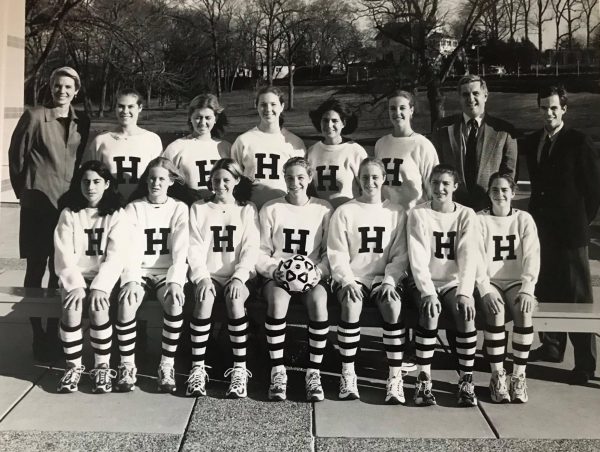
The Major-H sweater has carried different meanings for those who have worn it. Courtney Neese ’00, now the Edward Tuck Hall Distinguished Chair in English, was captain of varsity soccer, basketball, and softball teams. As a student, she was among the first females to receive the Major-H sweater after the school became coed in 1998.
“The athletic fields were one of the first spaces on campus where females started to earn respect from our male classmates,” Neese said. “With the school going co-ed, some were fearful that male sports would be weakened, but once they saw the level of athleticism that females were bringing to campus, their opinions began to change.”
“So, in many ways, the first Major-H sweaters symbolized belonging,” Neese said.

